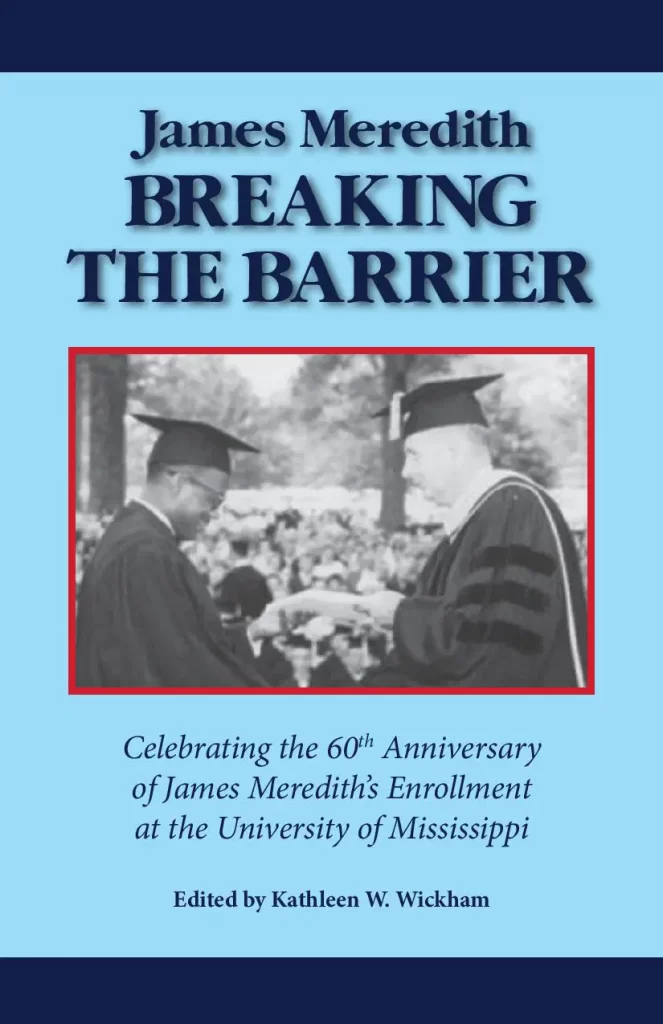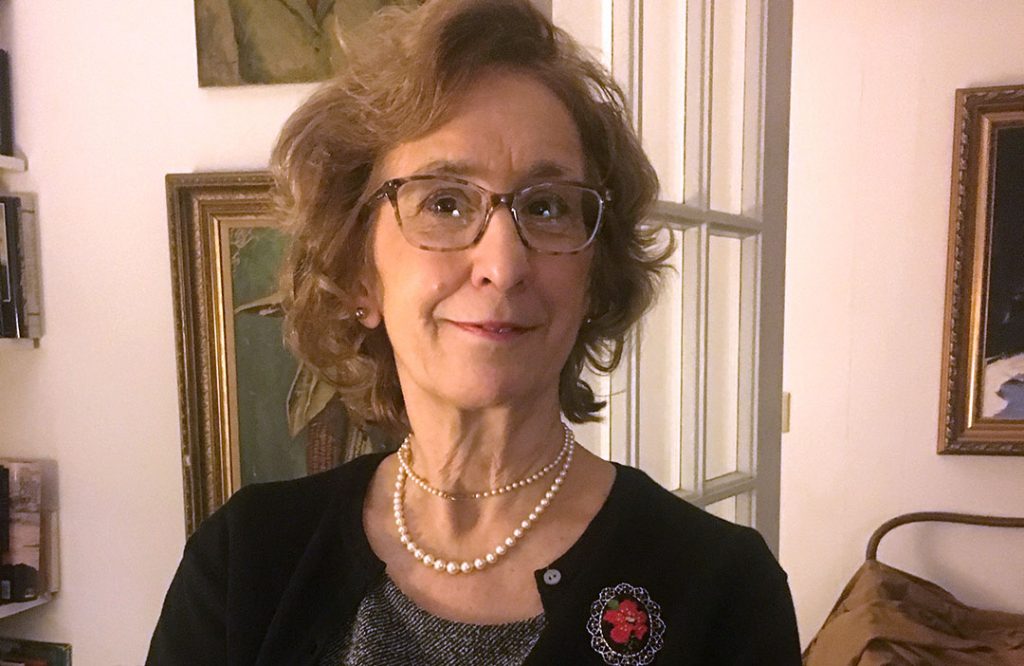By Allen D. Boyer
“To me, the ultimate outcome was relatively insignificant,” James Meredith wrote, looking back on his enrolling at the University of Mississippi. “Whether or not I went on to graduate was a minor issue. The important thing was that I had earned the privilege of choice.”
This week marks the 60th anniversary of James Meredith’s enrollment as the first black student in the history of the University of Mississippi. “James Meredith: Breaking the Barrier,” edited by Kathleen W. Wickham, honors this anniversary with a perceptive collection of essays and memoirs.
Meredith himself authored two of the pieces in this volume, selections from his memoir “Three Years in Mississippi.” Sometimes he writes as a witness to events (of the Air Force transports crowding the Oxford airport and the hundreds of federal marshals massed there). In other passages, he emphasizes the goal he pursued. “My goal in Mississippi was to break the system of ‘White Supremacy’ at any cost. I felt a ‘Divine responsibility’ to accomplish this mission.”
William Doyle, author of “American Insurrection: James Meredith and the Battle of Oxford, Mississippi, 1962,” contributes an overview of “the Meredith Crisis” and the landscape on which it unfolded – a campus still centered on the Lyceum, a town where William Faulkner’s day had not yet passed. And, as in the rest of the state, the color bar remained in place. “At the university, no Black person was ever known to have attended the school as a student. Black faces on campus were common, but only as maids, food-service workers, and workmen.”
The story of the night of the Riot is told by two students who made careers in journalism. Curtis Wilkie recalls the build-up to the crisis, when Mississippians were being urged to “roll with Ross” (Ross Barnett, then Governor). A sketch map that Wilkie prepared supplies the best précis of the night. Area of most fighting, he wrote of the spot where flowerbeds faced the Lyceum. Initial tear gas attack. Fire truck captured. Chemistry building (radio reporters) attacked 11 pm. Car burning. Confederate monument. Barricades and car burning. Radio mobile unit destroyed and burned. Oxford boy dead 9 pm. Newsman dead 8 pm.
Sidna Brower Mitchell was the incoming editor of The Daily Mississippian. As a woman living on campus, in the Kappa Kappa Gamma sorority house, she was required to meet a curfew of 11 p.m. Nonetheless, she managed to put out a special issue of The Mississippian, and fought on through the fall with editorials that denounced violence and resistance. For years afterward Brower writes, she suffered nightmares: “I could almost feel the bottles splinter against the curb as I walked past the Lyceum. I could see and almost smell tear gas, hear the awful shouts and experience the hatred and confusion.”
Professor Wickham, a UM journalism professor and editor, has contributed to this book as well as edited it. Her essay covers the active life of Agence-France reporter Paul Guihard, one of the two men shot dead during the chaos of the Riot.
A tall, red-bearded man with a foreign accent, Guihard must have been marked for death by whoever led or forced him into a dark spot behind the Fine Arts Building. His body was found there, with a bullet hole in his back. No perpetrator has ever been named.
The Riot left scars on the campus and the community. For months afterward, the town was full of troops in olive drab, stopping cars and checking passes. On campus, tensions were high. The few students who sat in class with Meredith or ate with him in the cafeteria found themselves shunned, sometimes harassed (their dorm rooms ransacked or bleach poured on their laundry). Security remained tight. Henry Gallagher, a young officer in the Military Police, was in charge of Meredith’s security detail. He provides a first-person account of how he escorted Meredith to the registrar’s office, excerpted from his book “James Meredith and the Riot: A Soldier’s Story.”
Dorothy Gilliam, whom the Washington Post sent south to cover the changes being wrought, flew to Memphis and drove down with her photographer, Ernest Withers. “The smell of tear gas was still in the air,” she reports, and the Grove and Circle were littered with the detritus of rioting: “a smoldering vehicle, and bricks strewn about,” and “dead squirrels (that had been overcome by tear gas).” Gilliam found her mission off the campus, “out in the town, where the people lived,” and she found black people glad to talk to a young black woman reporter from a national newspaper.
This is the same task that Marquita Smith, a journalism professor at the School of Journalism and New Media, pursues in her contribution. Dr. Smith looks across Mississippi and the nation to report on how black Americans – among them singer and activist Effie Burt, and newsman Randall Pinkston — understood Meredith and the struggle for racial equality.
Former Mississippi Governor William Winter was then state treasurer. He found that rioting and resistance caused actual, financial costs:
“On a trip to New York City in 1964 to promote the sale of a school [bond] issue, I was shocked to discover that even though our state had an acceptable credit rating, we were paying significantly higher interest on similarly rated bonds than most other states. One issue floated on Wall Street in 1965 had no bidders at all because of the stigma resulting from the 1962 riot.”
Journalist Jesse Holland provides a foreword that, ironically and eloquently, sums up James Meredith’s contribution:
“Instead of a man, many people see a symbol of resistance,” Holland writes.
“We wanted a symbol, an icon, a representation of all of us. We got James Meredith, a man who had the courage to his way against all expectations, refused to kowtow to common expectations of himself and what he should be and didn’t care what the world thought about his person, his politics, or his goals.
“His determination to be himself and not what anyone else expected him to be is likely why James Meredith will always be a Mississippi hero and solely a national footnote and not a civil rights giant …
“Since James Meredith, thousands of African American students have attended Ole Miss, including my parents, my siblings, and myself. There have been Black Ole Miss athletes, scholars, journalists and students who all owe our starts to the courageous stand Meredith made. Without him, the University of Mississippi we know today would not exist.”
“James Meredith: Breaking the Barrier.” Edited by Kathleen W. Wickham. Yoknapatawpha Press, 2022. 147 pages. $15.00.
Allen Boyer, Book Editor for HottyToddy.com, grew up on the Ole Miss campus.



